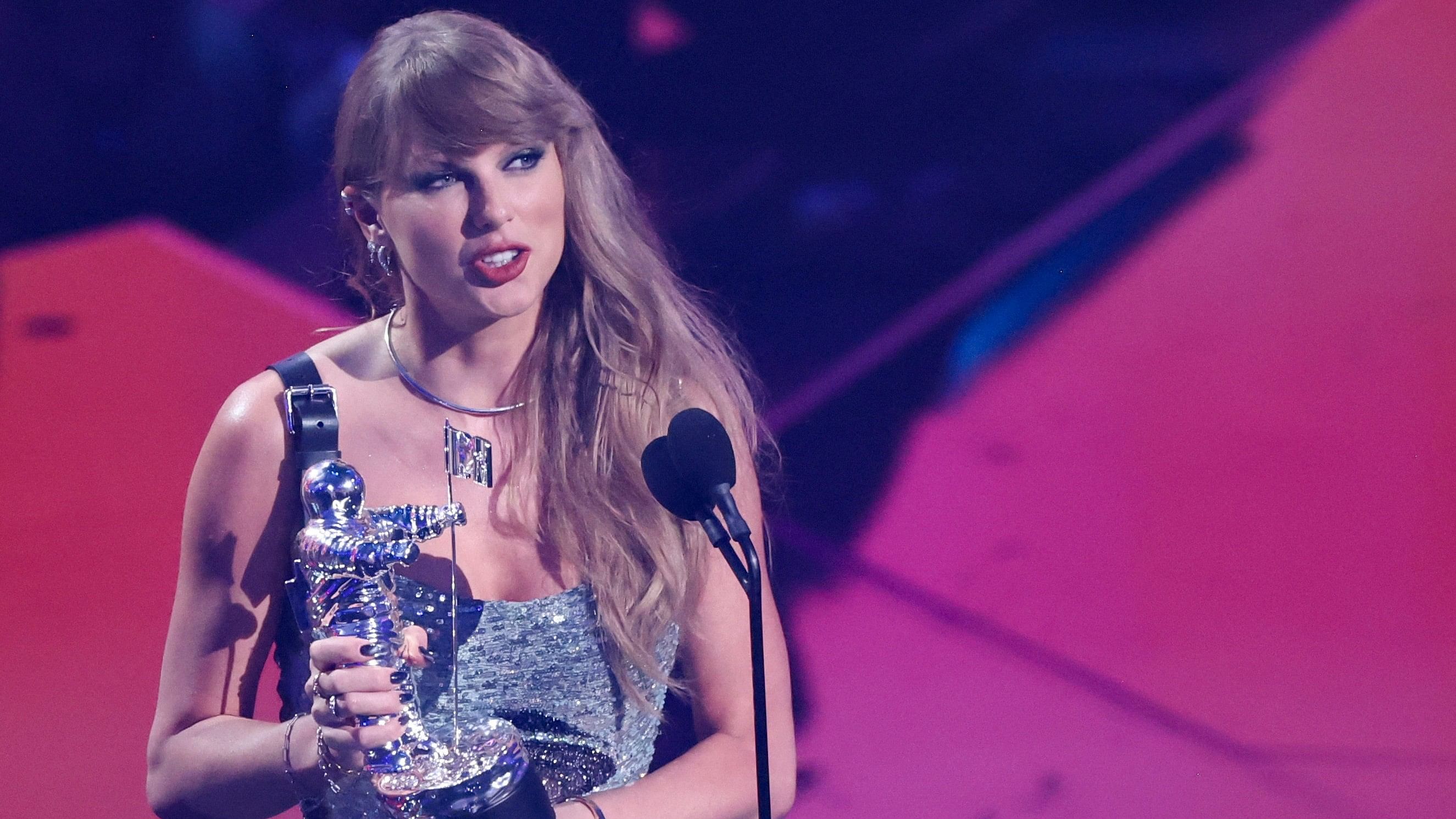
Singer Taylor Swift.
Credit: Reuters Photo
By Dave Lee
Whoever told a lie could get around the world before the truth had its boots on clearly didn’t envision the force of a megastar like Taylor Swift, who on Tuesday demonstrated that she could get ahead of any falsehood in an instant.
The singer’s blockbuster endorsement of Kamala Harris and Tim Walz, posted immediately after Tuesday’s presidential debate, has ended speculation over whether the singer would publicly back the campaign.
It has also done another very important job. The 34-year-old fought back against a technology that had been used to mischaracterize her views — not to mention degrade and sexualize her — and turned its viral power back on those who cynically abused it.
Weeks earlier, former President Donald Trump had pushed AI-powered disinformation that suggested Swift and her fans, known as Swifties, were backing him in the November 5 election.
Contained in the post on his Truth Social site were several cheaply made fakes, the kind of material that is coming to be known as AI “slop” generated with minimal effort using any number of the powerful tools now available for free. The sole purpose of these images is to go viral on social media, truth be damned.
The Guardian reported that the fake endorsement was an idea drummed up by a “murky” right-wing non-profit. According to Swift, it was this act that prompted her to go public with her backing of the Harris campaign.
“It really conjured up my fears around AI, and the dangers of spreading misinformation,” she wrote in a post on Instagram. “It brought me to the conclusion that I need to be very transparent about my actual plans for this election as a voter.”
We can only speculate about whether she would have publicly endorsed the ticket anyway. It doesn’t really matter. With 283 million Instagram followers, Swift has likely already reached a greater number of people with her endorsement than Trump did with the original offending post on Truth Social, which according to SimilarWeb saw a total of 16.5 million visits globally last month.
It has turned what had been an attempt to deceive a small number of gullible people into a calamitous own goal. Swift’s announcement has achieved global attention and swamped the internet.
Her previous political stances have prompted a rise in voter registration, primarily among young, typically Democrat voters. Even itchy-fingered Trump will surely now think twice about firing out posts with deep fakes or other AI-powered falsehoods in the future — lest he provoke someone else into publicly embarrassing him while holding a cute cat.
What actual difference Swift’s backing will have on the election will be hard to measure. But from a technological perspective, it is a notable moment in US political history — the most significant intervention we’ve seen in the electoral process stemming from the fraudulent use of AI, though perhaps not in the way some might have predicted.
For the last few years, researchers and misinformation specialists have warned about AI fakery’s potential role in deceiving voters. These concerns went into overdrive once tools made by OpenAI, Meta Platforms Inc., and others became widely available.
Unconvinced by legislative paralysis in Washington and insufficient safeguards on social networks, experts have been watching the run-up to November’s vote from behind the sofa — worried that a “deep faked” image or clip might take hold and impact people’s judgment.
Or, the mere existence of AI would make it possible for real occurrences to be written off as fake, such as Trump’s recent bogus claim that crowds at a Harris rally had been computer generated.
In that example, alternative footage confirmed the Harris crowd was very much there, of course, and fact-checkers descended on social media and news outlets to counteract Trump’s dishonesty.
Now, in the question of Swift’s endorsement, reality again wins out. Phew. She was able to use a verified, trusted platform — Instagram, not the corrupted X — to well and truly set the record straight. “The simplest way to combat misinformation is with the truth,” Swift said in her post, which attracted around 3.5 million likes its first hour.
But what’s simple for Swift will be far more difficult for anyone without her public profile. Truth has a far better chance of succeeding when you have hundreds of millions of followers.
When Swift was targeted with faked, sexualized images, it highlighted the fact that her experience was one being shared by a growing number of girls and women who, unlike the pop star, did not command the ability to have technology companies step in to stop the material spreading.
Likewise, in politics, AI’s real disruptive effect will come not from faking the endorsement of the world’s most famous woman but from infecting the shared truths of local communities as they try to decide fairly who should become a judge or join the school board. A hollowed out local press and poor digital literacy will see AI falsehoods spread like wildfire.
The Harris-Walz team will be riding high on Swift’s endorsement, as they should. But if they make it to the White House, they must waste no time in looking back and seeing this moment as another wake-up call on the dangers of this emerging technology. Taylor Swift, remarkable as she is, can only do so much.